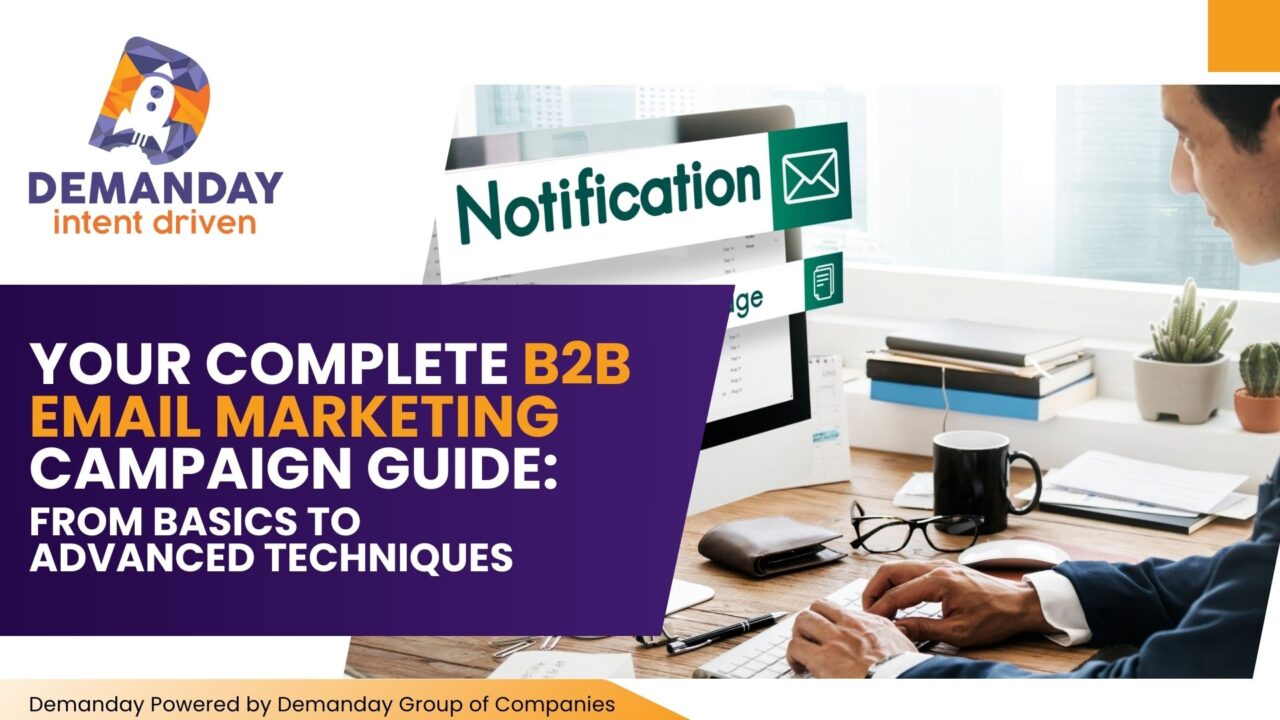Your Complete B2B Email Marketing Campaign Guide: From Basics to Advanced Techniques
Hey there! Are you ready to dive into the vibrant world of B2B email marketing? Whether you’re a newbie wondering how to start or a seasoned marketer looking to level up your email campaigns, you’ve landed in the right place! Email marketing is an incredible tool that allows businesses to connect, engage, and convert their audience, and I’m excited to guide you through every step of the process.
Let’s roll up our sleeves and get started on your complete B2B email marketing campaign guide, from the foundational steps to advanced strategies that will make your campaigns shine!
1. Understanding the Basics of B2B Email Marketing
What is B2B Email Marketing?
First things first! B2B, or business-to-business, email marketing refers to the practice of sending emails from one business to another. This approach often focuses on building relationships, nurturing leads, and, ultimately, driving sales. Unlike B2C (business-to-consumer) emails, which target individual consumers, B2B emails are tailored to cater to professionals and organizations.
Why is Email Marketing Important?
Return on investment (ROI) is highest with email marketing. According to studies, for every
1spent, you can expect an average return of Not to mention, it allows for personalization, automation, and precise targeting, which can elevate your customer relationships to new heights. You’re losing out on a great chance to interact with your audience if you’re not using email marketing.
2. Setting Up Your Email Marketing Campaign
Step 1: Defining Your Goals
Before you start sending emails, you need to define what you want to achieve. Are you looking to nurture leads, boost sales, or increase brand awareness? Having clear objectives will shape your campaign’s strategy and content!
Step 2: Building Your Email List
Your email list is the lifeblood of your campaign. You can build it through various methods:
- Website Sign-up Forms: Implement sign-up forms on your website, ensuring they’re easily accessible and enticing to your visitors.
- Lead Magnets: Offer valuable resources, like eBooks or whitepapers, in exchange for email sign-ups.
- Networking: Don’t underestimate the power of networking at industry events and webinars. Gather email addresses in person to grow your list!
Step 4: Selecting an Appropriate Email Marketing Platform
How do you pick the best platform when there are so many options available? Look for features such as:
- User-friendly interface
- List management capabilities
- Automation options
- Analytics and reporting tools
Popular choices include Mailchimp, HubSpot, and Constant Contact!
3. Crafting Your Email Campaigns
Step 4: Segmentation
Segmentation is crucial in B2B email marketing. By dividing your email list into specific segments based on criteria like industry, job role, or engagement level, you can send targeted messages that resonate with each group. Higher open and click rates result in increased conversions!
Step 5: Writing Compelling Emails
Now comes the fun part – writing your emails! Here are some pointers to remember::
- Personalization: Use your recipient’s name and tailor content to their interests.
- Concise Subject Lines: Capture attention quickly; aim for subject lines that are short and engaging.
- Engaging Content: Provide valuable insights, case studies, or solutions to pain points that resonate with your audience.
- Clear Call to Action: Tell your readers exactly what you want them to do – whether it’s signing up for a webinar or downloading a resource.
Step 6: Designing Eye-Catching Templates
Your emails should not only be informative but visually appealing! Use templates that reflect your brand identity. Ensure they are responsive to different devices, as many users check their emails on mobile.
4. Implementing Advanced Strategies
Now that you’ve mastered the basics, let’s explore some advanced strategies to improve your email marketing game and achieve even greater success!
Step 7: A/B Testing
A/B testing (or split testing) involves sending two variations of an email to determine which one performs better. You can test different subject lines, layouts, messaging, or send times. With this data-driven strategy, you can continuously optimize your marketing.
Step 8: Automation and Drip Campaigns
You can save time and ensure timely engagement with email automation. Create drip campaigns that automatically send a series of emails based on user actions or milestones. For instance, send welcome emails, follow-up sequences, or re-engagement messages to keep your audience’s interest alive.
Step 9: Analyzing Performance and Adjusting Strategies
To thrive in email marketing, analyzing your campaign’s performance is vital! Track metrics such as:
- Open rates
- Click-through rates (CTR)
- Conversion rates
- Bounce rates
Use this data to refine your future campaigns. Don’t be afraid to experiment, learn, and evolve your strategies!
5. Nurturing Your Leads and Building Relationships
Step 10: Consistency is Key
Consistency is vital. Create a regular cadence for your email campaigns – whether that’s weekly, bi-weekly, or monthly. Building familiarity with your audience strengthens relationships and keeps them engaged.
Step 11: Providing Value Beyond Selling
Your emails should only sometimes be sales-oriented. Share industry insights, relevant articles, and tips to provide value to your audience. This positions you as a trusted authority and keeps your brand top-of-mind when they’re ready to make a purchasing decision.
Step 12: Asking for Feedback
Don’t hesitate to seek feedback from your audience! Create surveys or invite them to reply to your emails with their thoughts. By interacting with them, you may further customize your content to meet their wants and demonstrate your concern for their ideas.
Final Thoughts
There you have it! Your complete B2B email marketing campaign guide is packed with essential tips and advanced strategies to elevate your marketing efforts. Stay up-to-date with trends, continuously test your strategies, and refine your approach to ensure ongoing success.
Using this information, let your imagination go wild and create enduring connections with your audience right now. Happy emailing, and may your inbox overflow with success!



